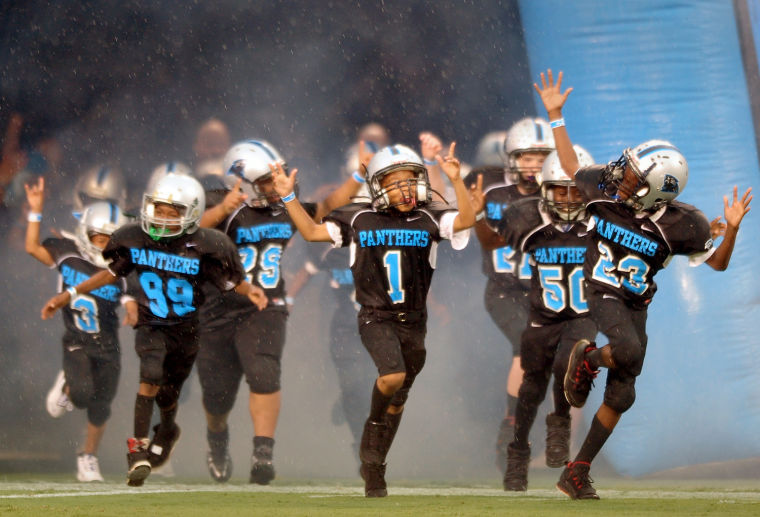Welcome Back: Youth football could learn lessons from Michigan youth hockey
August 18, 2013
Anyone who has ever played tackle football understands what it feels like to be “ear-holed,” or to have a blocker ram his face mask into the side of a defender’s helmet.
It’s the type of hit that leaves a lasting impression. A headache and ringing ears affect a player’s short-term play, but it’s the mental impact that’s often detrimental to future performance. Strangely enough, picking himself off the turf after a blindside hit of this nature, a player almost always feels fortunate the impact didn’t leave him concussed.
Unfortunately, hits like this are all too common in football’s developmental leagues, such as Pop Warner. Certain players are simply more physically developed than others, which can often lead to serious head injuries. As troubling as this trend is, there might be a solution. Oddly enough, it can be found in Michigan’s youth hockey program.
Unlike many other states where young players often travel hundreds of miles to play countless periods of hard-hitting hockey, Michigan has begun a transition toward a system based on player development rather than competition for its youngest members. Modeling itself after Sweden’s national system, the American Development Model emphasizes the basics: skating, stickhandling and learning to love the game.
The goal of the program is to prepare hockey players for competition during their teenage years while reducing the violence associated with the sport. And though the new system is in its early phases, the results thus far have been positive. An example of this can be found in Grosse Pointe, Mich., where participation among 8-year-olds has doubled to 120 since 2011, when Michigan embraced the ADM.
Considering the serious nature of injuries in football, perhaps it’s time for the sport to embrace a similar model.
Youth football players currently face brutal summer training camps, in which hard-hitting team scrimmages and dangerous tackling drills are all too common. Weekly games often leave players who face serious injuries out of play for a significant amount of time, forcing them to miss out on opportunities to develop fundamental skills necessary to compete.
And that’s the most pressing issue facing the sport: Players who are competing don’t possess the fundamental skills necessary to play the sport, a dangerous reality for coaches and parents of players. Poor tackling form can lead to serious neck and head injuries, which can have long-term side effects since these young players aren’t physically developed.
But Michigan’s youth hockey program is proof that a solution can be formulated in a short time period. During practices, coaches could transition live scrimmages into 7-on-7 drills, in which quarterbacks can develop their ability to read defenses and make throws; wide receivers can improve their pass-catching and route-running abilities; and cornerbacks and safeties can improve their coverage skills.
For running backs, linebackers and offensive and defensive lineman, coaches should reinforce a renewed focus on the basics of their respective positions. Form tackling, form blocking and, shockingly enough, running, should be emphasized over physically dominating an opponent.
Rather than staging full-contact games for 7- and 8-year-olds, teams could compete in 7-on-7 competitions without pads, and offensive linemen could practice blocking against blitzing linebackers. In this proposed scenario, coaches and parents wouldn’t need to constantly worry about their young players sustaining the potentially devastating injuries that could result from live games.
Simply put, youth sports need to return to their original goal: recreation and physical fitness. Athletes love competition, but those who aren’t accustomed to the rigors of it often pay a hefty price. By focusing on development over competition, football’s governing body could generate new interest in a sport that’s facing declining participation at its lowest levels.
It has been said that a crisis is a terrible thing to waste, and the injury crisis facing the sport of football is no exception. It’s time to save the one sport that is truly American.



